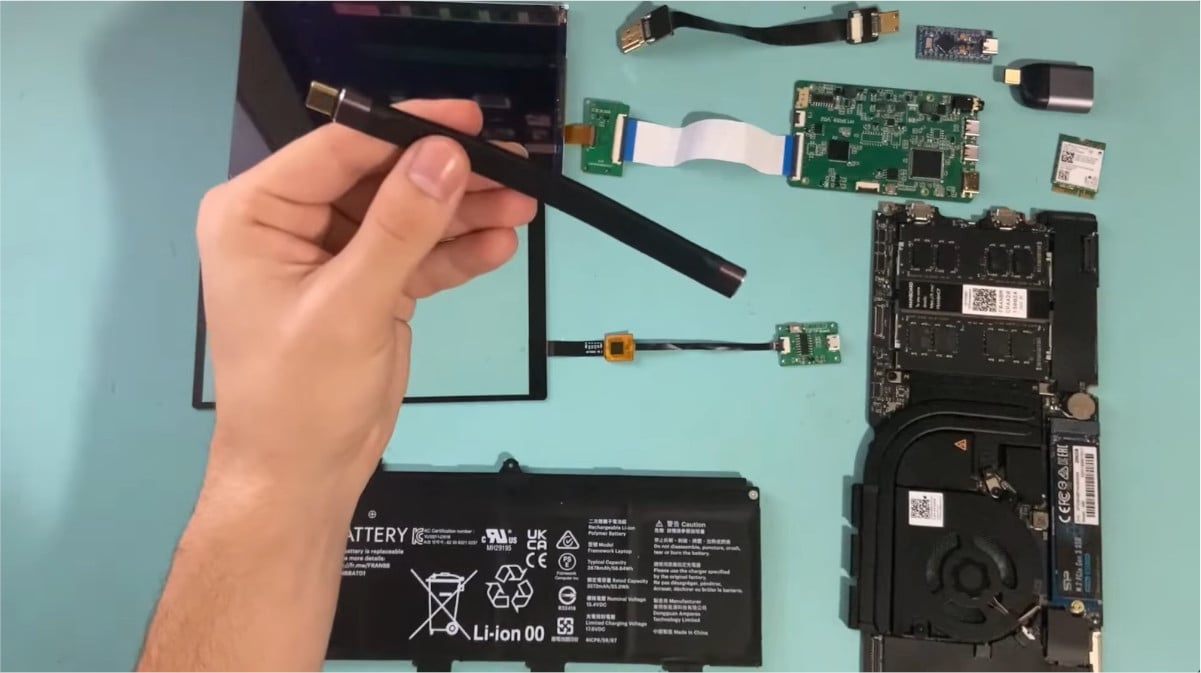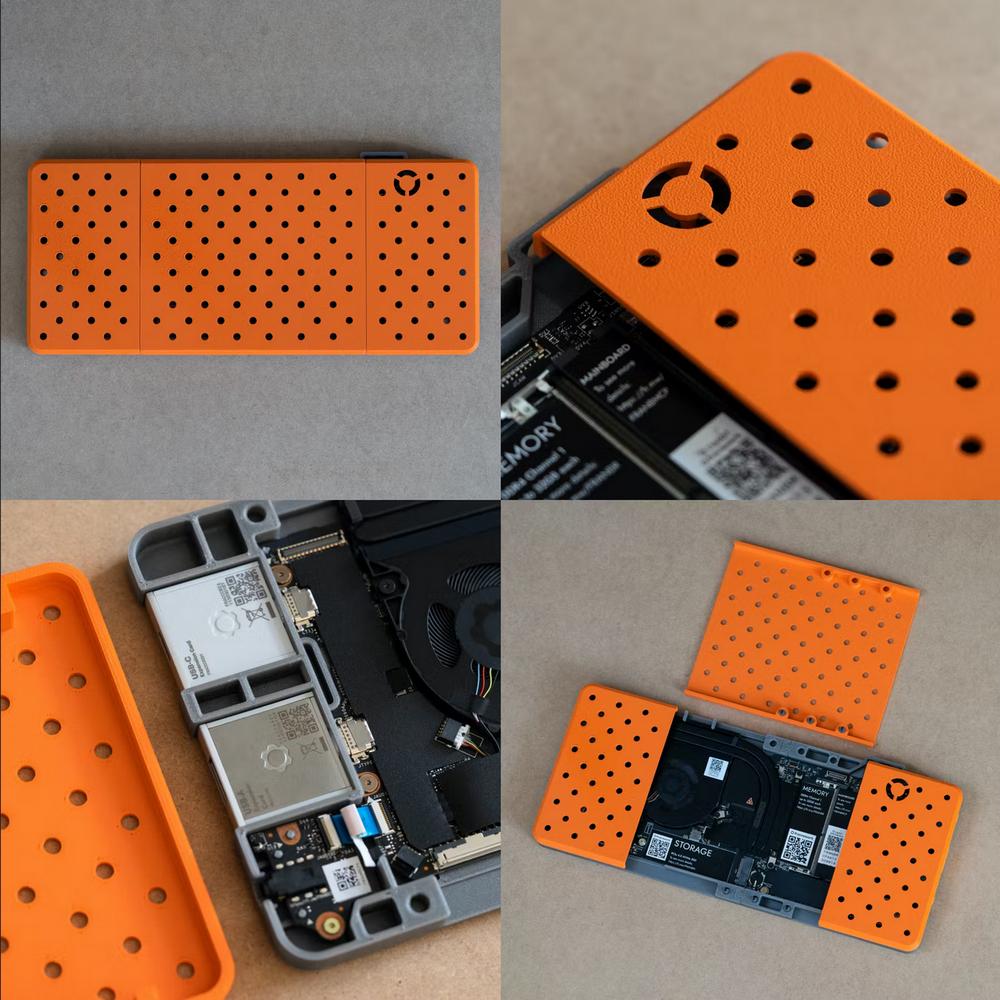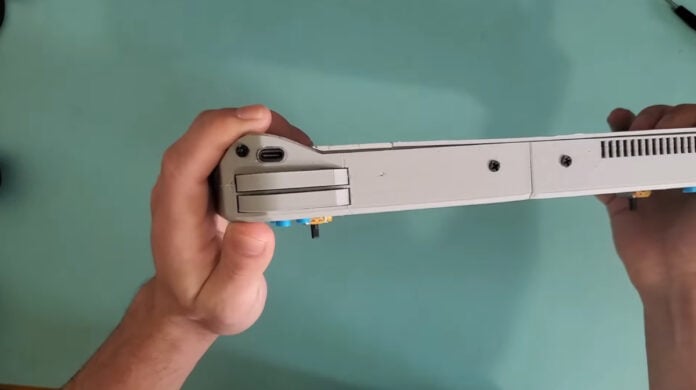The world’s first Steam Deck-like, open-source, Framework-powered handheld has finally arrived. A modder has revealed in great detail how to build your very own FrameDeck! Granted, you need the technical prowess, some spare time, and money to make it happen.
The chonky boy was created by Steven B in a two-part mini-series on YouTube. The FrameDeck Rev.1 prototype is far from complete, but the main bits are there, and it’s fully functional. The project requires a reasonable level of skill in soldering, 3D printing, 3D modelling, and basic coding, meaning it is not for the faint-hearted.
Thankfully, most of the grunt work and design is complete. Steven was even gracious enough to include a Github detailing the steps, 3D files, and the parts required to build it. All this was possible because of a Framework 13 Laptop mainboard and battery.
The readily-available mainboard was paired with a 7in, 1200p display and digitizer, WiFi 6 card, 16GB of SODIMM DDR4 RAM, and a speedy M.2 NVMe drive. Meanwhile, an Arduino Pro Micro acts as a controller for the peripheral I/O devices. These include triggers, dual joysticks, start/select buttons, and Kalih choc mechanical switches for face buttons. Plus, a single speaker for audio.


Of course, putting this all together means it weighs considerably more than a basic Steam Deck. Steven reckons this creation is over 42% heavier than its rivals at 952g, compared to the 669g Steam Deck and 608g Asus ROG Ally. It’s undoubtedly quite chonky, but considering this uses off-the-shelf components, it’s an impressive feat nonetheless!
A bit more on Framework
In case you haven’t heard, Framework Computer Inc. is an American laptop computer manufacturer that positions itself as a proponent of the electronics right-to-repair movement. The Framework 13 laptop is one of the company’s most recent products. The company is very different from mainstream manufacturers because its products are easy to disassemble, upgrade, and repair. Plus, Framework’s design philosophy is based on modularity and sustainability. It’s also relatively simple for users to get specific replacement parts. Suffice it to say, this makes it an ideal pairing for modding enthusiasts like Steven. A match made in heaven, if you will.

Nevertheless, Framework offers its mainboard as a standalone component in three CPU configurations: an Intel Core i5-1135G7 for $399, i7-1165G7 for $549, and i7-1185G7 upwards of $799. All are four-core/eight-thread CPUs running at various speeds. You merely need to add memory/storage, plug in a USB-C power adapter, hit the power button, and presto! Besides this awesome little handheld, we’ve already seen a super-small mini PC. The price of admission may leave a lot to be desired, yet it’s impossible to ignore the opportunity for creation.
Should you build it? Well, Steven says not quite yet. There’s still so much room for improvement. The screen gets way too hot, the body is designed for structural integrity rather than ergonomics, and the wiring could be simpler. That doesn’t mean you couldn’t improve on it yourself, and that’s the beauty of it all. Nonetheless, the bar is set, and we can’t wait to see more FrameDeck’s pop up in the future.

